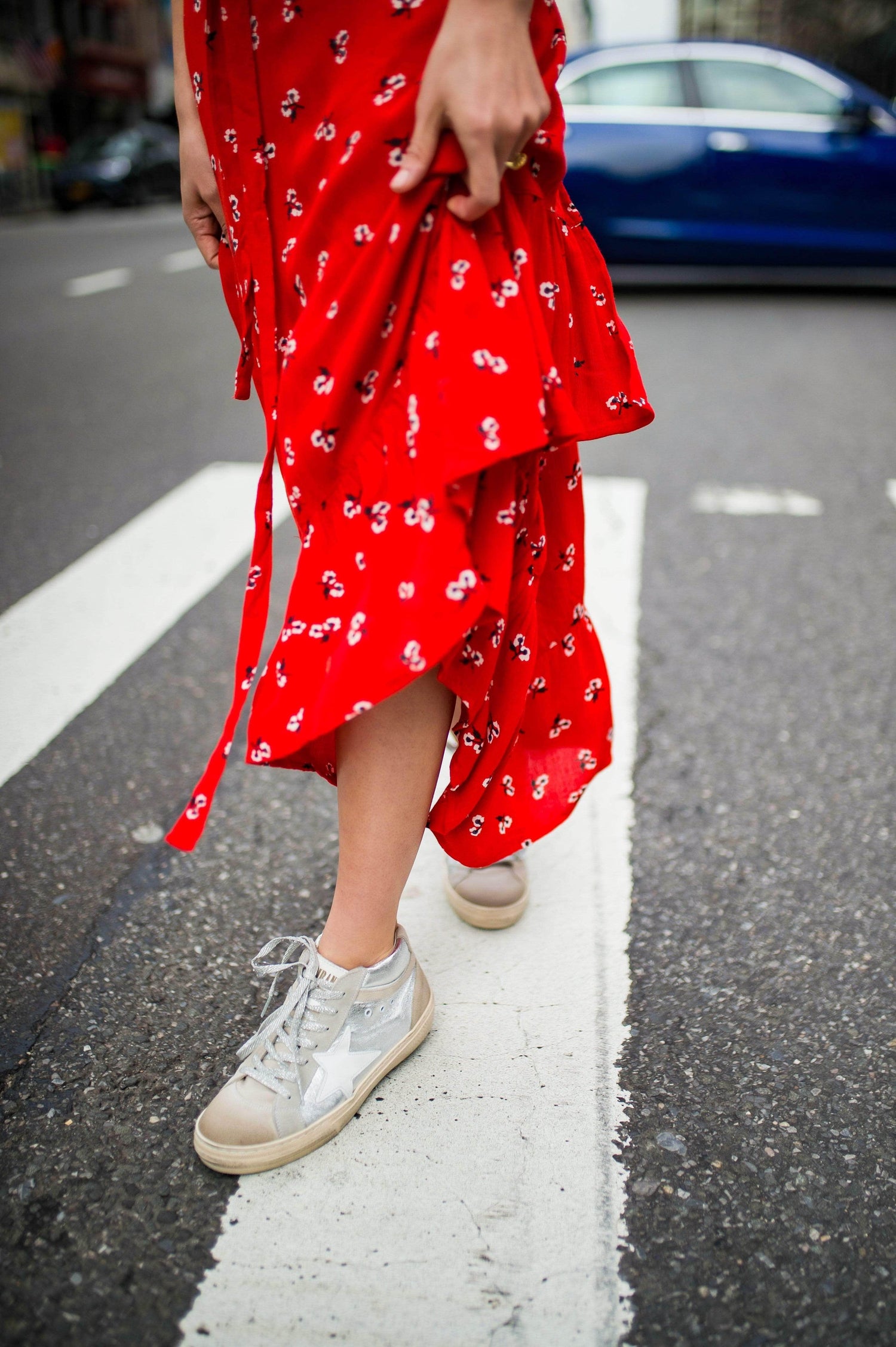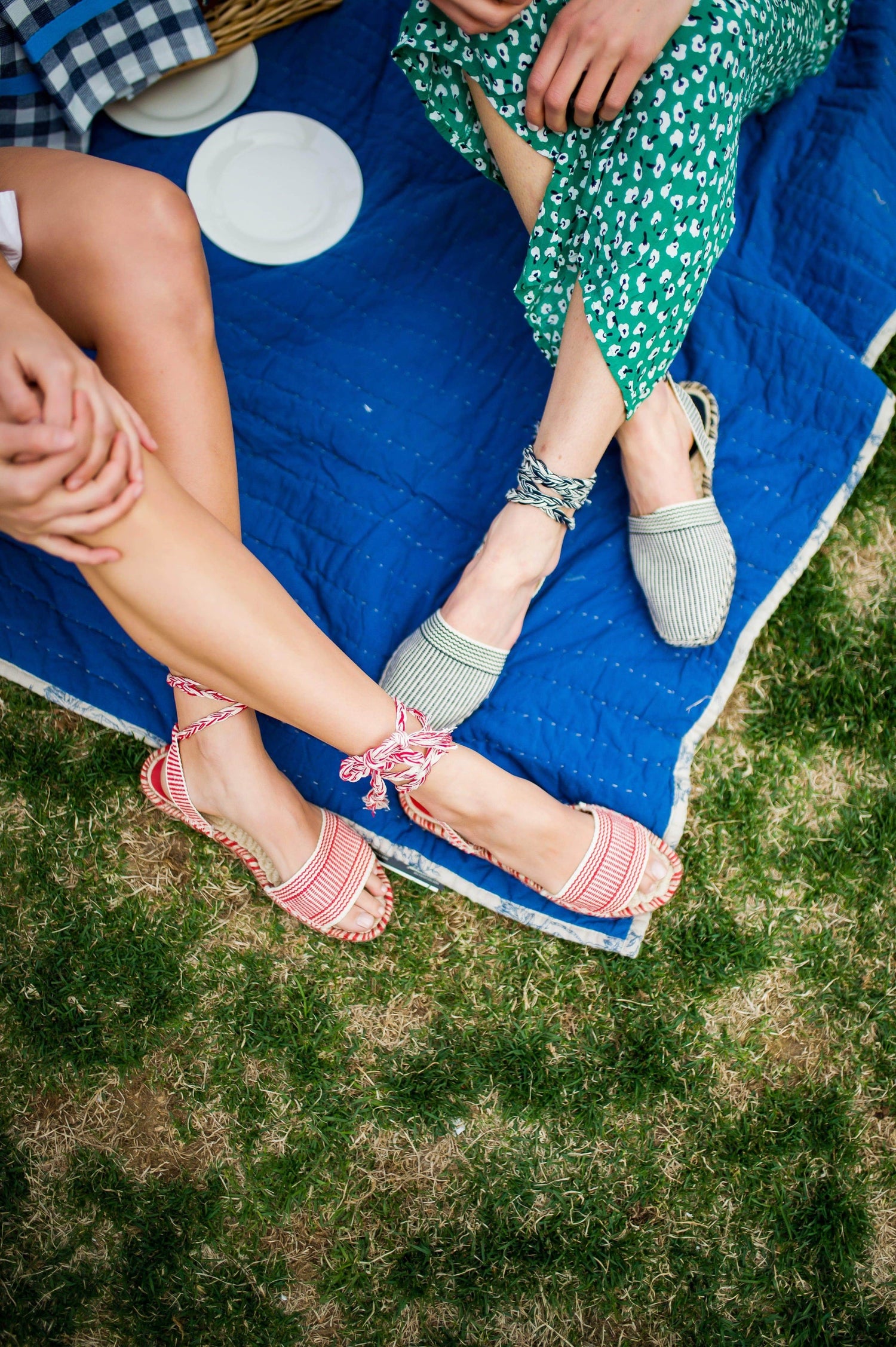The leaves have finally stopped drifting down from trees, and the air drops a few degrees cooler each night. Before you know it, you'll wake up to a world covered in white snow.
It's winter, the season of bright holidays, crackling fires and oversized sweaters. But not every side effect of winter is a positive one — winter weather is known for being temperamental, and an unexpected snowstorm could damage your favorite pair of autumn shoes. However, it's possible to make your favorite pair of boots water resistant, so you can still wear your go-to footwear all season long.
How to Protect Boots From Rain and Snow
It's impossible to make any pair of shoes completely waterproof — instead, most weatherproofing treatments aim to increase the water resistance of your footwear. However, if your shoes are exposed continuously to wetness for long periods, no waterproofing treatment will be able to keep out all moisture from your shoes.

That being said, there are steps you can take to protect your boots from the elements. However, if your boots have been soaked by melting snow, you can't immediately apply a waterproofing solution. First, you need to carefully and thoroughly dry your shoes to prevent long-term damage.
If your shoes get wet, follow these steps to thoroughly dry them:
- Wipe away excess water: First, use a rag or cloth and wipe away any excess water from the exterior of the shoe.
- Dry the interior: Next, you need to dry out the inside of the shoe. To extract the moisture from the interior of your boots, try placing a small dry towel or newspaper inside the shoe. The dry materials should absorb any moisture that has seeped into the interior of your boot.
- Monitor the material: Change out the dry material every few hours — if it gets waterlogged, it will keep the shoe damp, which defeats the purpose.
- Stay away from heaters: Avoid the temptation to place the shoes next to a direct heat source. While this may dry the shoes quickly, it can easily crack and damage materials like leather. For the best results, place your wet shoes in a dry area, but let them dry out at room temperature.
- Recondition your shoes: This step primarily applies to leather boots. Once your shoes look dry, go over them with a cloth and recondition them with polish or another moisture-restoring product.
Once your boots have dried completely, you're ready to begin the weatherproofing process.
Types of Weatherproofing Treatments
People have been weatherproofing their shoes for millennia. However, our range of treatment options has drastically changed — where wax used to be the only available option, today's market is filled with a variety of waterproofing products.

The two broad categories of waterproofing treatments are wax-based and silicone-based.
- Wax-based treatments: Polishes or treatments derived from wax serve a dual purpose. They produce a lovely shine and keep your shoes in prime condition. They also spread a thin protective layer over the surface of your shoes, helping them repel water and salt. Although effective, wax treatments often require consistent and dedicated reapplication for maximum success.
- Silicone-based treatments: Some waterproofing sprays and treatments are silicone-based. Silicone is a common waterproofing agent — you've probably encountered it on products like disposable coffee cups. Silicone-based treatments will work on all types of shoes and materials, making it a practical choice if you want to weatherproof multiple pairs of shoes. However, silicone treatments can sometimes discolor leather, so take care when applying.
Both types of treatments are effective — you can weatherproof shoes using either wax or silicone-based products. However, when working with leather, wax is the tried-and-true method for effective waterproofing.
How to Weatherproof Boots
Almost everyone agrees that falling snow is beautiful. Something about the stillness and brilliance of snowfall is comforting and breathtaking.
However, everything changes the moment you have to take a walk. Powdery snowflakes quickly melt into freezing gray slush, and even the most determined shoes can get soaked if they aren't weatherproof.
Keep your feet dry, and your shoes protected this winter — if you can, try weatherproofing your leather or suede boots before the first heavy snow.
1. Leather Boots
Waterproofing your go-to pair of leather boots may seem unnecessary — isn't leather naturally weatherproof? While leather does have some weatherproofing properties, over time, real leather will lose its natural moisture and dry out and crack. Water will seep through these small cracks and seams before you know it, ruining your shoes and freezing your feet.
For extra protection, consider weatherproofing your leather boots before they get too old or worn. To weatherproof your leather boots, you need the following materials:
- A stiff brush to clean the boots
- A wax leather treatment or silicone spray
- A buffing and applicator cloth
Once you've gathered your supplies, you're ready to begin. Here's how to weatherproof your leather boots:
- Choose a treatment: First, choose the right waterproofing treatment for your leather boots. For leather boots, your safest choice is probably a wax treatment. While silicone is effective, it can discolor leather, further damaging your shoes.
- Clean your boots: The next step in weatherproofing leather boots is to thoroughly clean them. Knock off any mud or dirt with a stiff brush, and gently wash the boots with a damp cloth, saddle soap and water. Rub away any scruffs, and make sure you don't get the leather too wet — use only enough water to clean them, not soak them. Remove any laces and wash them separately.
- Dry your boots: Once you have cleaned your boots, set them aside to dry. Don't set them next to a heat source — if the leather dries too quickly, it can harden and crack. If you need them to dry quickly, you can use a hair dryer to gently heat the shoes. Make sure that the dryer is set to the lowest heat setting to avoid overheating the leather.
- Apply the treatment: Apply a small amount of wax to a cloth or rag. Beginning at the lower areas of the shoe, work the wax into the leather in small circles. Spend extra time sealing the seams — these are the places most vulnerable to water.
- Let the treatment cure: For the best results, allow the treatment to set overnight. The next day, place your boots in a warm, sunny location to let the treatment continue to soak into the leather.
Buff off any residue with a clean cloth and enjoy your pair of polished, water-resistant leather boots.
2. Suede Boots
During the fall, your pair of suede boots were your go-to shoes. Beautiful, fun and classy, a pair of suede boots are a staple for any wardrobe.
However, suede is easily damaged and stained by water, which is frustrating during winter — suede has a texture that easily absorbs the elements. But it's possible to rock your suede through the holiday season. Collect these materials to begin the process of weatherproofing your suede boots:
- A soft brush or cloth
- A setting or waterproofing spray
- Optional stain erasers to correct existing damage
After you have gathered the necessary supplies, you're ready to begin weatherproofing your boots. Here's how:
- Choose a treatment: For suede shoes, your best bet is probably going with a silicone waterproofing spray.
- Clean your boots: Using a towel, cloth or soft brush, clean your boots of any dust, dirt or debris.
- Dry your boots: Let your boots dry before applying any waterproofing product. As with leather boots, make sure to let your boots dry at room temperature for the best results.
- Apply the treatment: When applying a waterproof treatment to suede, always make sure that you have brushed the material so that the grain is all facing in the same direction. Spray the treatment evenly — a heavier coating in some spots may lead to permanent discoloration.
- Let the treatment cure: Allow your suede shoes to dry completely before wearing them. Set them aside in a dry space for at least 24 hours after applying the treatment.
Enjoy your pair of water-resistant suede boots. Keep in mind that no waterproofing treatment can make your suede boots immune to water, so still avoid walking directly through snow banks or puddles as much as possible.
Home Remedies for Weatherproofing Boots
If you need to weatherproof your shoes quickly and don't have time to go to the store, it's possible to make your shoes more water resistant using materials found around your home.
The most popular way to weatherproof leather boots is the candle and blow dryer method. For this home remedy, all you need are the following materials:
- A pair of leather shoes
- A candle or enough beeswax to rub over your entire shoe
- A standard blow dryer
- A pair of rubber gloves
Once you've gathered your supplies, you're ready to begin the weatherproofing process:
- Spread the wax: Using a candle or beeswax, firmly rub the wax over the entire surface of your shoe. You want a total, even coating for the best results.
- Heat with the blow dryer: Turn on the blow dryer and evenly heat the shoe. The heat will seal the wax and melt it into the shoe, giving a somewhat congealed-looking finish.
- Let it stand: Once you have sealed the wax over the full surface of the shoe, let the shoes stand for at least five or ten minutes before you slip them on.
While this is not a foolproof method, it works well when you need water-resistant shoes quickly.
What Boots Are Recommended for Rain and Snow
If you would prefer not to weatherproof your favorite fall footwear, you can always invest in a few pairs of boots specially designed to stand up to harsh winter weather.

While water-resistant boots can withstand light to moderate rains and snow, if you are planning to explore intense winter landscapes, you might want to invest in waterproof boots made of a non-porous material.
Here are some of our picks for the most stylish and most functional boots to wear in rain and snow:
1. Leather Boots
Embrace the natural water-resistant properties of leather and rock a pair of chic urban boots this winter.
Try a pair of slip-on burgundy leather boots for an extra pop of color during the drab winter months.
If you live in a place that experiences intense snow, ice and rain each year, you know the value of a pair of boots with traction. Try a pair of urban black leather boots with a slip-resistant tread.
2. Waterproof Suede Boots
You don't have to give up your favorite styles just because it's snowing. If you love the look of suede, consider purchasing a pair of waterproof suede boots for the cold-weather months.
For a hip and modern look, you could invest in a pull-on suede bootie with a stacked heel. If you prefer a sleeker take on the style, you could always go with a super chic, black suede ankle boot with minimalist silver detailing.
This lined bootie blends a practical, slip-resistant tread with a classy heel to create an adorable, effortless winter staple. Mix a few different materials for an urban effect, or combine a waterproof suede upper with a practical platform wedge for a shoe that won't let you down — even if you are faced with a snowy commute.
3. Insulated Boots
Few things are as frustrating as cold, wet feet. If your feet are freezing, you can't enjoy an otherwise lovely romp through fresh snow or a quiet hike in the woods. For truly frigid conditions, consider trying insulated boots.
This grey, cold-weather hiking boot is trimmed with luscious fur, combining maximum comfort with ultimate style. For a less-structured look, consider a black, fur-lined bootie that is sure to keep your feet warm all winter long.
Simultaneously utterly functional and strikingly fashionable, this black waterproof boot is lined in white material and features white accents above the sole. If you love a more natural look, consider trying a structured and rugged fur-lined boot that will keep you dry and ready for any adventure.
4. Over-the-Knee Boots
During the cold winter months, your primary objective is often staying warm. Embrace your inner celebrity and consider a pair of elegant, waterproof knee-high or over-the-knee boots.
Because they come up so high on your leg, these boots cut down on wind exposure and help keep your legs warm all season long. Try a pair of sophisticated, black over-the-knee suede boots for a timeless look that goes with any color scheme.
If you prefer bolder colors, try a knee-high riding boot in burnt orange leather. These boots will keep you warm and dry as well as add a little sparkle to your wardrobe.
5. Rubber Boots
If you live in warmer climates, winter might mean more rain than snow. If you want a boot that will keep your feet dry from winter rains, consider investing in a stylish pair of rubber boots.
Rubber boots don't have to be boring or basic — go with a timeless and spunky cheetah-print boot, or try a city-inspired plaid pattern. For a classic look, consider a perky red pair of rubber boots, or try on a pair of sleek black rubber booties.
Find Your New Favorite Pair of Winter-Ready Boots
With the right shoes, winter is a magical and peaceful season. If you are searching for a perfect pair of water-resistant boots, let the footwear experts at Shoe-Inn help.
At Shoe-Inn, we take shoes seriously. With an extensive collection of designer-made shoes at affordable prices, we make it easy to find on-trend boots that will keep you warm and dry all winter long. Whether you are walking through a snowy downtown or a muddy national park, we have a pair of beautiful and practical boots that will suit your taste and your wallet.
Browse our selection of rain and cold weather shoes today.




